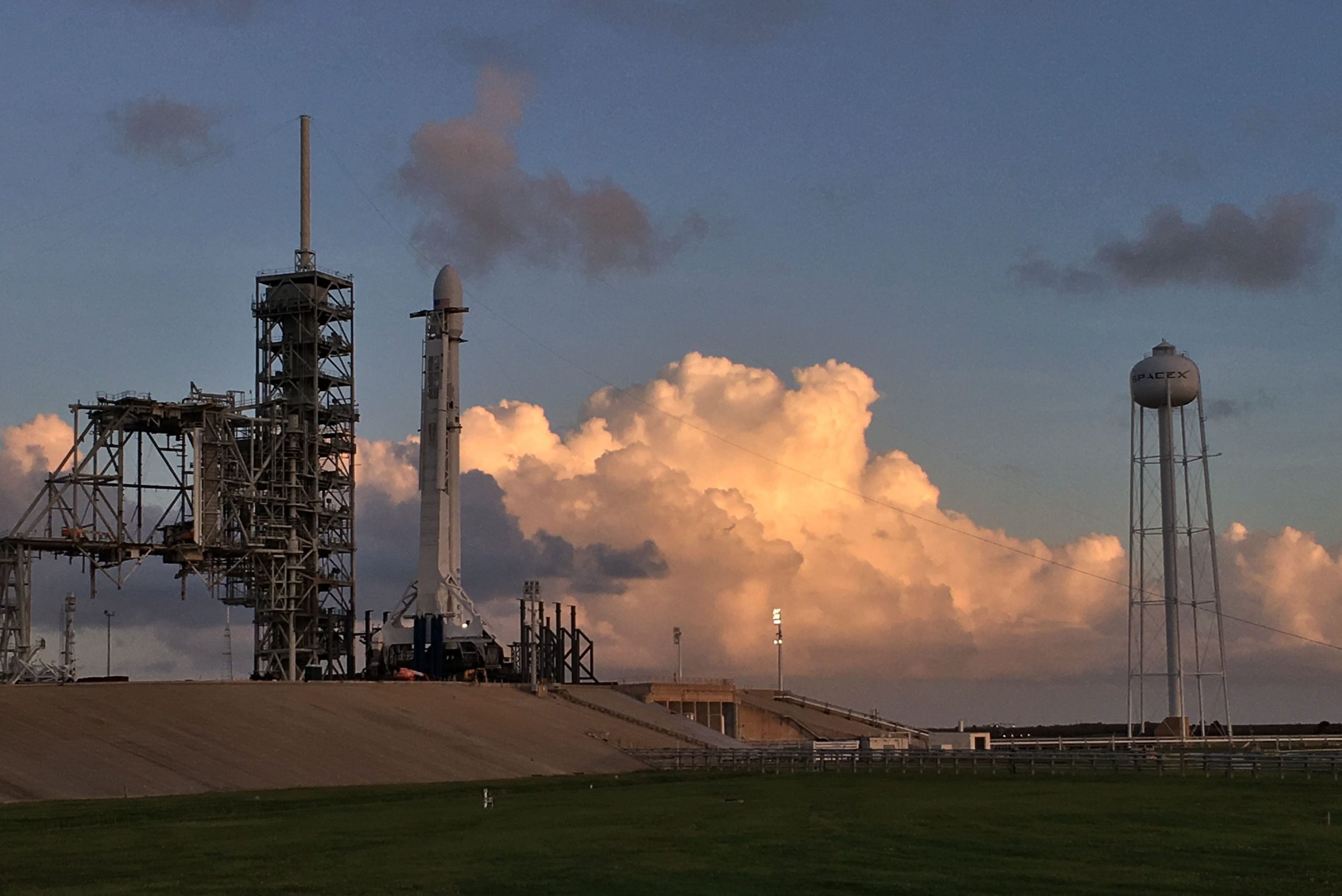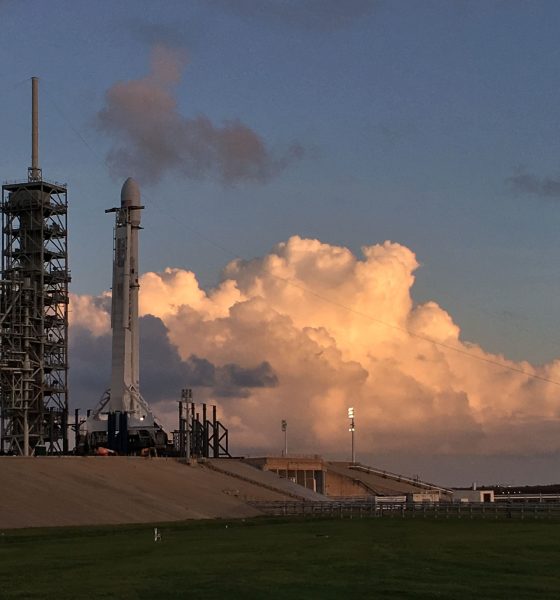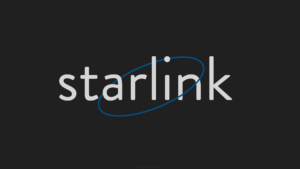

News
SpaceX could provide satellite broadband service as early as 2020
Patricia Cooper, SpaceX’s VP of Satellite Government Affairs, provided a statement to the Senate Committee on Commerce, Science, and Transportation regarding SpaceX’s broadband satellite constellation ambitions.
Of note, Cooper reiterated on Wednesday that SpaceX intends to launch two prototype satellites into orbit within the next few months, and further suggested that an operational Starlink launch campaign is tentatively scheduled to begin in 2019. She also noted that the company’s initial ~4000 satellite constellation is meant to be launched over a space of five years, with limited service beginning in 2020 or 2021 once ~800 satellites have been placed in Low Earth Orbit (LEO).
While officially unconfirmed, FCC filings have for several months suggested that SpaceX was hoping to launch its first prototype communications satellites relatively soon, and Cooper’s comments indicate that those prototypes will be launched in late 2017 or early 2018. According to those documents, the reported orbit of SpaceX’s prototype Microsats fits perfectly with the planned orbit of PAZ, a Spanish Earth imaging satellite, which is scheduled for launch from Vandenberg Air Force Base, CA on January 30 2018.

SpaceX’s Starlink satellite constellation efforts could provide the company with valuable experience that can be applied around Mars. (unofficial logo by Eric Ralph)
More experimental satellites are likely to follow the launch of Microsat 2A/2B, although SpaceX’s aggressive technology development strategy could preclude future experimental launches if all goes as planned. If SpaceX hopes to begin operational launches by 2019 and launch ~800 satellites no later than 2021, the company will have to both settle on a finalized design and rapidly expand its satellite manufacturing capabilities in the near term.
Nevertheless, Cooper unambiguously stated that SpaceX is not currently pursuing outside investment for Starlink research and development. This suggests the company is relatively confident in its near and long term strategies for rolling out its satellite broadband constellation, despite its aggressive schedule.
OneWeb, also pursuing a large broadband constellation, plans to effectively mirror SpaceX’s current strategy approximately one year before, with initial launches in 2018 and limited service in 2019. As such, OneWeb’s success or lack-thereof will almost certainly inform SpaceX’s own strategy, although the technologies being pursued by both companies are somewhat different, as are the launch opportunities for each company.

After launching SES-10, the first stage was recovered for a second time aboard the drone ship OCISLY. Reuse will be a major boon for SpaceX’s internal satellite efforts. (SpaceX)
As a vertically-integrated launch provider with considerable expertise in orbital rocketry, SpaceX undoubtedly has the upper hand over all competitors simply because it can quite literally launch at cost, bypassing the relative difficulty of procuring vast numbers of commercial launches. Combined with SpaceX’s ability to unilaterally fly on refurbished launch vehicles, it is all but impossible that competing broadband constellation providers can meet a similar level of cost efficiency while purchasing market-value launches.

News
Tesla FSD fleet is nearing 7 billion total miles, including 2.5 billion city miles
As can be seen on Tesla’s official FSD webpage, vehicles equipped with the system have now navigated over 6.99 billion miles.

Tesla’s Full Self-Driving (Supervised) fleet is closing in on almost 7 billion total miles driven, as per data posted by the company on its official FSD webpage.
These figures hint at the massive scale of data fueling Tesla’s rapid FSD improvements, which have been quite notable as of late.
FSD mileage milestones
As can be seen on Tesla’s official FSD webpage, vehicles equipped with the system have now navigated over 6.99 billion miles. Tesla owner and avid FSD tester Whole Mars Catalog also shared a screenshot indicating that from the nearly 7 billion miles traveled by the FSD fleet, more than 2.5 billion miles were driven inside cities.
City miles are particularly valuable for complex urban scenarios like unprotected turns, pedestrian interactions, and traffic lights. This is also the difference-maker for FSD, as only complex solutions, such as Waymo’s self-driving taxis, operate similarly on inner-city streets. And even then, incidents such as the San Francisco blackouts have proven challenging for sensor-rich vehicles like Waymos.
Tesla’s data edge
Tesla has a number of advantages in the autonomous vehicle sector, one of which is the size of its fleet and the number of vehicles training FSD on real-world roads. Tesla’s nearly 7 billion FSD miles then allow the company to roll out updates that make its vehicles behave like they are being driven by experienced drivers, even if they are operating on their own.
So notable are Tesla’s improvements to FSD that NVIDIA Director of Robotics Jim Fan, after experiencing FSD v14, noted that the system is the first AI that passes what he described as a “Physical Turing Test.”
“Despite knowing exactly how robot learning works, I still find it magical watching the steering wheel turn by itself. First it feels surreal, next it becomes routine. Then, like the smartphone, taking it away actively hurts. This is how humanity gets rewired and glued to god-like technologies,” Fan wrote in a post on X.
News
Tesla starts showing how FSD will change lives in Europe
Local officials tested the system on narrow country roads and were impressed by FSD’s smooth, human-like driving, with some calling the service a game-changer for everyday life in areas that are far from urban centers.

Tesla has launched Europe’s first public shuttle service using Full Self-Driving (Supervised) in the rural Eifelkreis Bitburg-Prüm region of Germany, demonstrating how the technology can restore independence and mobility for people who struggle with limited transport options.
Local officials tested the system on narrow country roads and were impressed by FSD’s smooth, human-like driving, with some calling the service a game-changer for everyday life in areas that are far from urban centers.
Officials see real impact on rural residents
Arzfeld Mayor Johannes Kuhl and District Administrator Andreas Kruppert personally tested the Tesla shuttle service. This allowed them to see just how well FSD navigated winding lanes and rural roads confidently. Kruppert said, “Autonomous driving sounds like science fiction to many, but we simply see here that it works totally well in rural regions too.” Kuhl, for his part, also noted that FSD “feels like a very experienced driver.”
The pilot complements the area’s “Citizen Bus” program, which provides on-demand rides for elderly residents who can no longer drive themselves. Tesla Europe shared a video of a demonstration of the service, highlighting how FSD gives people their freedom back, even in places where public transport is not as prevalent.
What the Ministry for Economic Affairs and Transport says
Rhineland-Palatinate’s Minister Daniela Schmitt supported the project, praising the collaboration that made this “first of its kind in Europe” possible. As per the ministry, the rural rollout for the service shows FSD’s potential beyond major cities, and it delivers tangible benefits like grocery runs, doctor visits, and social connections for isolated residents.
“Reliable and flexible mobility is especially vital in rural areas. With the launch of a shuttle service using self-driving vehicles (FSD supervised) by Tesla in the Eifelkreis Bitburg-Prüm, an innovative pilot project is now getting underway that complements local community bus services. It is the first project of its kind in Europe.
“The result is a real gain for rural mobility: greater accessibility, more flexibility and tangible benefits for everyday life. A strong signal for innovation, cooperation and future-oriented mobility beyond urban centers,” the ministry wrote in a LinkedIn post.
News
Tesla China quietly posts Robotaxi-related job listing
Tesla China is currently seeking a Low Voltage Electrical Engineer to work on circuit board design for the company’s autonomous vehicles.

Tesla has posted a new job listing in Shanghai explicitly tied to its Robotaxi program, fueling speculation that the company is preparing to launch its dedicated autonomous ride-hailing service in China.
As noted in the listing, Tesla China is currently seeking a Low Voltage Electrical Engineer to work on circuit board design for the company’s autonomous vehicles.
Robotaxi-specific role
The listing, which was shared on social media platform X by industry watcher @tslaming, suggested that Tesla China is looking to fill the role urgently. The job listing itself specifically mentions that the person hired for the role will be working on the Low Voltage Hardware team, which would design the circuit boards that would serve as the nervous system of the Robotaxi.
Key tasks for the role, as indicated in the job listing, include collaboration with PCB layout, firmware, mechanical, program management, and validation teams, among other responsibilities. The role is based in Shanghai.
China Robotaxi launch
China represents a massive potential market for robotaxis, with its dense urban centers and supportive policies in select cities. Tesla has limited permission to roll out FSD in the country, though despite this, its vehicles have been hailed as among the best in the market when it comes to autonomous features. So far, at least, it appears that China supports Tesla’s FSD and Robotaxi rollout.
This was hinted at in November, when Tesla brought the Cybercab to the 8th China International Import Expo (CIIE) in Shanghai, marking the first time that the autonomous two-seater was brought to the Asia-Pacific region. The vehicle, despite not having a release date in China, received a significant amount of interest among the event’s attendees.








